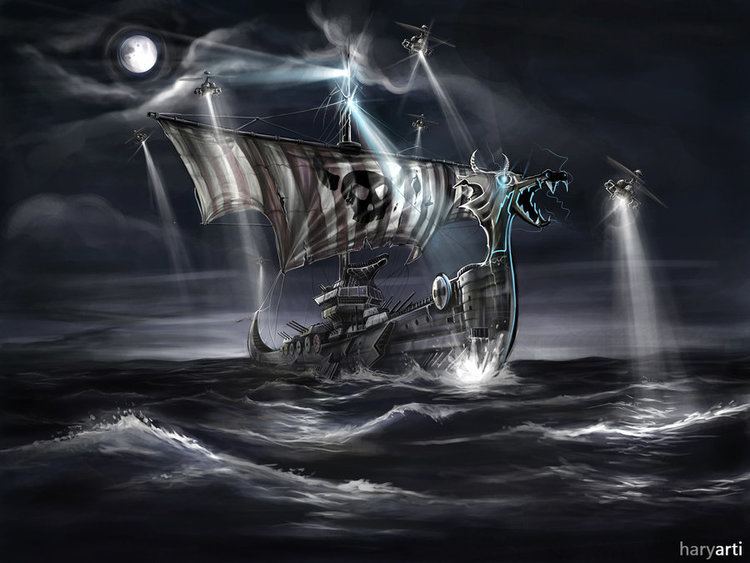 | ||
In Norse mythology, Naglfar or Naglfari (Old Norse "nail ship") is a boat made entirely from the fingernails and toenails of the dead. During the events of Ragnarök, Naglfar is foretold to sail to Vígríðr, ferrying hordes that will do battle with the gods. Naglfar is attested in the Poetic Edda, compiled in the 13th century from earlier traditional sources, and the Prose Edda, written in the 13th century by Snorri Sturluson. The boat itself has been connected by scholars with a larger pattern of ritual hair and nail disposal among Indo-Europeans, stemming from Proto-Indo-European custom, and it may be depicted on the Tullstorp Runestone in Scania, Sweden.
Contents
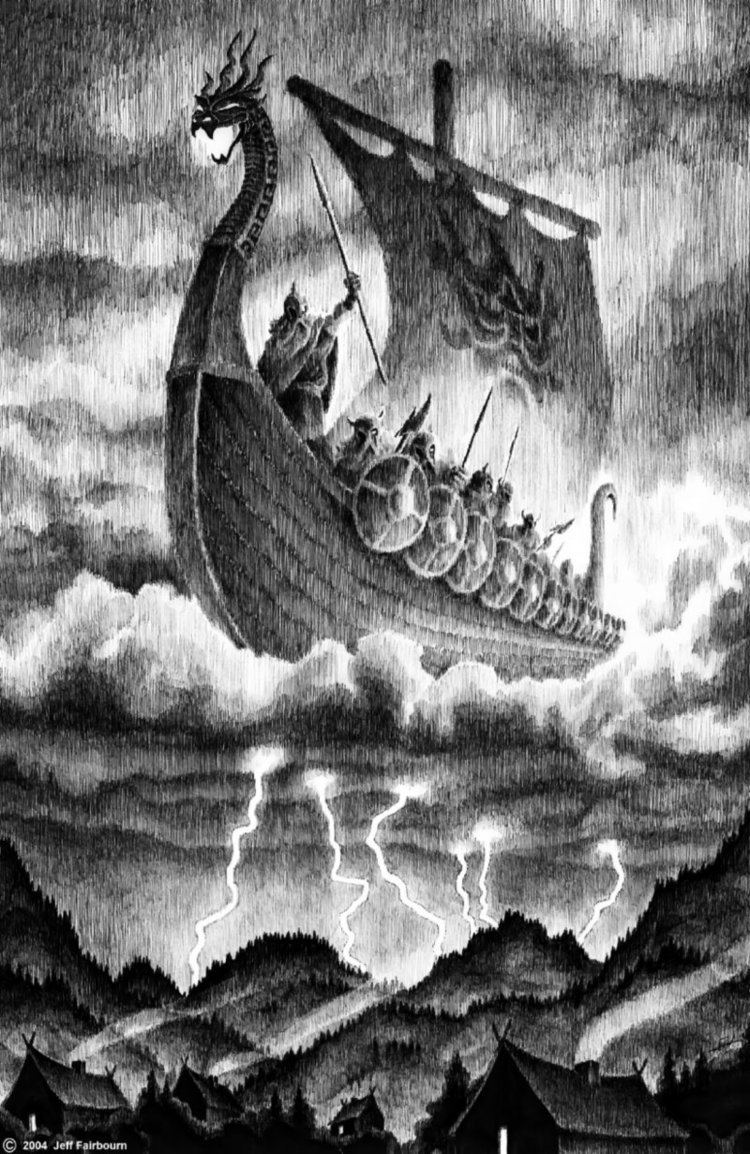
Etymology
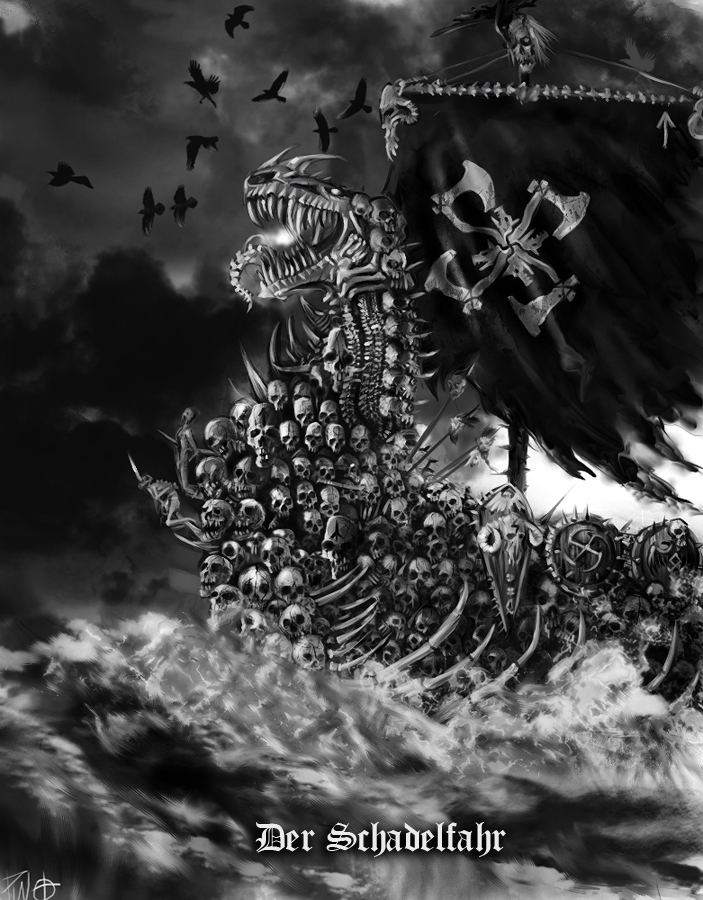
Some dispute has waged over the etymology of Naglfar. In the late 19th century, Adolf Noreen proposed that nagl- here does not have its usual meaning of "nail", but, instead, is a variant of Old Norse nár (meaning "corpse") and ultimately derives from Proto-Indo-European *nok-w-i. Noreen claimed that the notion of Naglfar as a 'nail-ship' is due to a folk etymology; that elaboration on the folk etymology produced the concept of a "nail-ship".
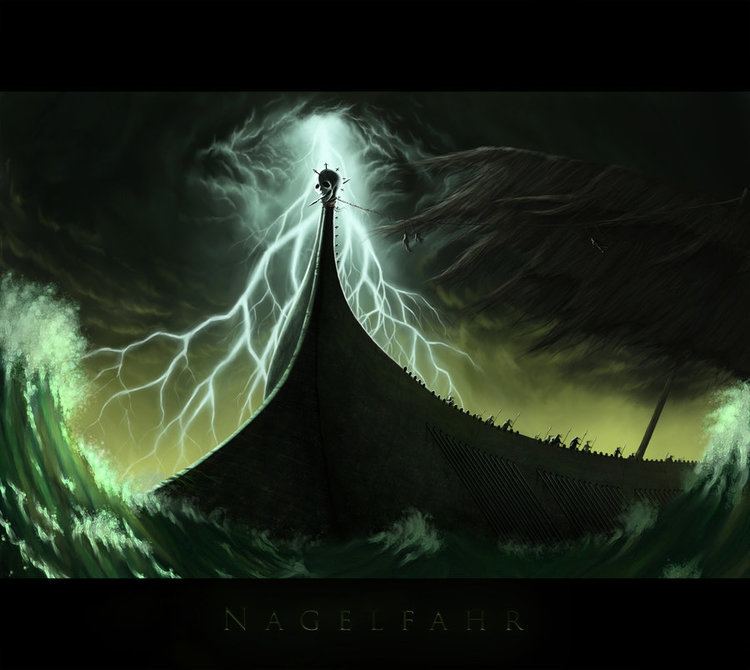
However, Sigmund Feist (1909) rejects the theory on etymological grounds, as does Albert Morley Sturtevant (1951) on the grounds of major difficulties, and their points have led Bruce Lincoln (1977) to comment that "there is no reason whatever to contend that nagl- does not have its usual meaning of 'nail' and that Naglfar is anything other than the nail-ship, just as Snorri describes it." In addition, Lincoln finds the ship to be a part of a larger pattern of religious disposal and sacrifice of hair and nails among the Indo-Europeans (see below).
Attestations
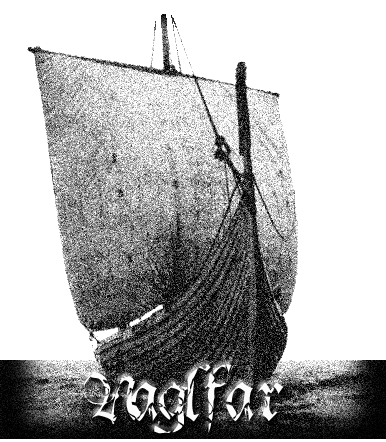
Naglfar is attested in both the Poetic Edda and the Prose Edda. In the Poetic Edda, Naglfar is solely mentioned in two stanzas found in the poem Völuspá. In the poem, a deceased völva foretells that the ship will arrive with rising waters, carrying Hrym and Loki and with them a horde of others:
In the Prose Edda, Naglfar is mentioned four times. The ship is first mentioned in chapter 43 of Gylfaginning, where the enthroned figure of High notes that while Skíðblaðnir is best the ship—constructed with the finest skill—"the biggest ship is Naglfari, it belongs to Muspell".
In chapter 51, High foretells the events of Ragnarök. Regarding Naglfar, High says that after the stars disappear from the sky, the landscape will shake so severely that mountains fall apart, trees uproot, and all binds will snap, causing the wolf Fenrir to break free. After, the Midgardr Serpent Jörmungandr will fly into a rage and swim to the shore, causing the ocean to swell unto land. Naglfar, too, will be break free from its moorings. High describes the composition of Naglfar as that of the untrimmed nails of the dead, and warns about burying the dead with untrimmed nails, stating that "the ship is made of dead people's nails, and it is worth taking care lest anyone die with untrimmed nails, since such a person contributes much material to the ship Naglfar which gods and men wish would take a long time to finish". High adds that the ship will be captained by the jötunn Hrym, and that Naglfar will be carried along with the surging waters of the flood. Further in chapter 51, High quotes the Völuspá stanzas above that references the ship.
Naglfar receives a final mention in the Prose Edda in Skáldskaparmál, where it is included among a list of ships.
Archaeological record
If the images on the Tullstorp Runestone are correctly identified as being from Ragnarök, then Naglfar is shown below the monstrous wolf Fenrir. It has been pointed out that the ship image has beakheads both fore and aft unlike any known Viking ship, and is thus likely to be a symbolic ship.
Interpretations and theories
In his study of treatment of hair and nails among the Indo-Europeans, Bruce Lincoln compares Snorri's Prose Edda comments about nail disposal to an Avestan text, where Ahura Mazdā warns that daevas and xrafstras will spring from hair and nails that lay without correct burial, noting their conceptual similarities. Lincoln comments that "the specific image of Naglfar, the "Nail-ship," is undoubtedly specific to the Germanic world, although it does date to an ancient date within that area. But the basic idea on which it is based—that the improper disposal of hair and nails is an act which threatens the well-being of the cosmos-does ascend to the Indo-European period, as can be seen from comparisons [with Iranian myth]."
